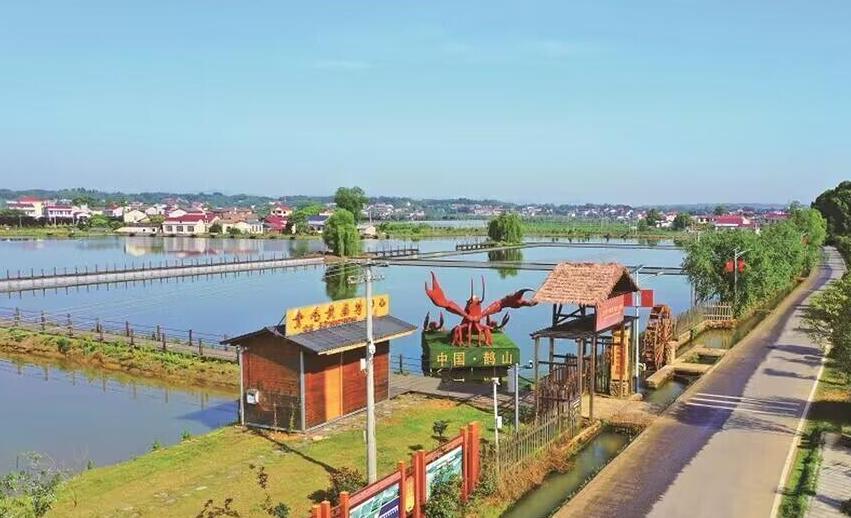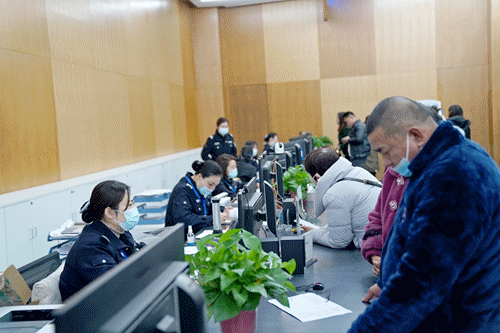Miyin Temple on Dawei Mountain: A 1,000-year-old Buddhist legend
The Miyin Temple on Dawei Mountain is a cultural relics protection unit founded in the Tang Dynasty (618-907), more than 1,200 years ago, 70 kilometers west of Ningxiang city, Hunan province. According to legend, Sima Toutuo, a famous fengshui master of the Tang Dynasty who traveled to Ningxiang, believed that Dawei Mountain was a blessed place because of its majestic peaks and dense forests. He went to Baizhang Mountain in Jiangxi province to visit Zen master Baizhang and told him about his discovery of the mountain.
Zen master Baizhang sent Lingyou to Dawei Mountain and Linyou sat in meditation on Dawei Mountain for seven years. When Lingyou decided to leave, he was blocked by a group of tigers and leopards a few miles from the mountain, which forced him to go back to Dawei Mountain. The Pantuan Stone and Huixin Bridge on the mountain are believed the remains of Lingyou.
Later when Zen master Baizhang visited Dawei Mountain and saw the vast sea of woods on the mountain, he reported to the imperial court and asked for more people to develop the mountain.
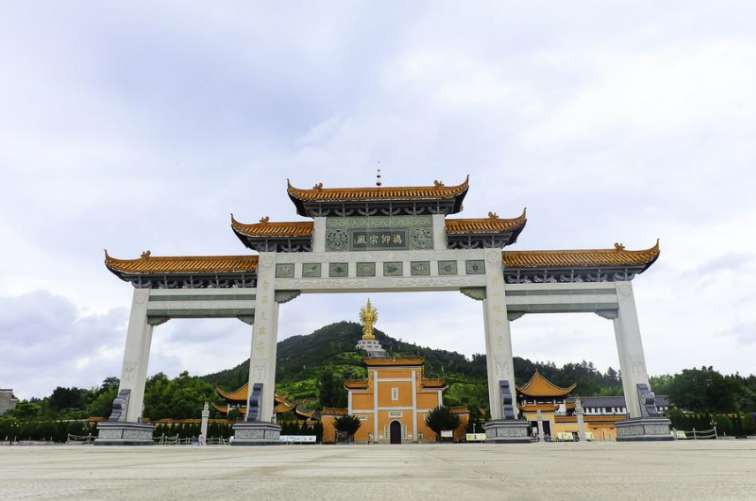
Miyin Temple on Dawei Mountain is a cultural relics protection unit. [Photo/nxiang.net]
Buddhism became prosperous in the Tang Dynasty and the emperor ordered Prime Minister Pei Xiu to call for monks at various monasteries to develop Dawei Mountain and build temples.
The Miyin Temple is tall and majestic, and the Hall of Ten Thousand Buddhas – which was rebuilt in 1993 – is its main building. Featuring an East Asian hip-and-gable roof about 27 meters high, it has exquisite cornices, golden-glazed tiles and 38 pillars of white granite inside and outside the temple. Under the eaves is decorated with elaborate ruyi (S-shaped ornamental objects symbolizing good luck) brackets, giving the hall a majestic and beautiful appearance.
As many as 12,218 Buddha statues are embedded in the walls of the hall and each Buddha has been decorated in gold. The hall's name – Hall of Ten Thousand Buddhas – originates from its myriad Buddhas.
Surrounding the Hall of Ten Thousand Buddhas, there are a group of ancient buildings, including the East Hall, the West Hall, the Qi Hall, the Fa Hall and the Merits and Virtues Hall.
Behind the Qi Hall, there is a natural stone standing upright, and people call it the "oil-salt stone". According to legend, when the monastery was built, thousands of monks were fed by the oil and salt that constantly poured out of the stone. There are also two shoe-marks on the stone, and legend has it that they are the footprints of Pei Xiu's wife, Mrs. Chen.
The water supply channel for the whole temple was built by donations from Mrs. Chen and is made from hundreds of small grooved stones. It transported water to the temple's kitchen from the Longwang Well 1.61 kilometers away from the temple.
The Muniu Stone is on the side of Jielu Peak, the highest point of Dawei Mountain. It is several meters long and wide, and it is said to be the place where Zen Master Lingyou sat in meditation. Before 1949, Master Taixu, president of the Buddhist Association of China, wrote a poem for the stone.
The union of a ginkgo tree and a sandalwood tree is another wonder of Dawei Mountain. It is said that the huge ginkgo tree that grows at the back of the temple was planted by Lingyou. The trunk of the ginkgo tree is tall and hollow, and a sandalwood tree grows in it. It is unique to see the ginkgo tree's branches grow with sandalwood leaves at the turn of spring and summer.
In addition, the area is home to some other exciting sites, including the Laimu Well, the Shizi Bank, the Zu Pagoda and the Pei Xiu Tomb. Pei Xiu died at Dawei Mountain shortly after completing construction of Miyin Temple and he was buried there. Zhangshi was also buried nearby in the Song Dynasty (960-1279). The temple is surrounded by mountains and water and has stunning scenery.
A couplet and a banner are engraved on the white stone pillars of the tall and majestic gate of Miyin Temple. The temple was destroyed and rebuilt five times in its history. In the third year of Emperor Huizong's reign (1104) in the Song Dynasty, the temple was burned and rebuilt by Master Kongyin for the first time. Later, in the third year of Emperor Hongwu's reign in the Ming Dynasty (1370), the temple was burned again and the Hall of Ten Thousand Buddhas was rebuilt by Master Chedang. The temple was burned the third time in the 47th year of Emperor Shenzong's reign (1619) in the Ming Dynasty, and it was restored by Master Huishan in the 12th year of Emperor Shunzhi's reign (1665) in the Qing Dynasty. In 1918, the temple was burnt down the fourth time by Zhang Sanyuan and was rebuilt by Master Sengbao with donations in 1933.
The temple was looted at the beginning of the "cultural revolution" (1966-76) for the fifth time. It was designated by the Hunan Provincial Revolutionary Committee as a provincial key cultural relics protection unit in 1972. In 1979, Hunan's provincial government sent personnel to rebuild the Hall of Ten Thousand Buddhas. Since then, Miyin Temple has undergone a stunning restoration.
The founding masters of Miyin Temple were Zen masters Lingyou and Baizhang of the Tang Dynasty. The famous abbots of the temple include Master Kongyin in the Song Dynasty (960-1279), Master Chedang in the Ming Dynasty (1368-1644), Master Huishan in the Qing Dynasty (1644-1911), and Master Sengbao of the Minguo period (1912-49). The most famous and virtuous people in the temple's history include Prime Minister Pei Xiu of the Tang Dynasty, Pei Xiu's wife, Mrs. Chen, and the renowned thinker Zhang Shi in the Song Dynasty.
The Miyin Temple inherited the Buddha dharma system of the auspicious Weiyang School. Its style is unique in the history of Chinese Buddhism, and the dharma method is well established.
Zen master Baizhang sent Lingyou to Dawei Mountain and Linyou sat in meditation on Dawei Mountain for seven years. When Lingyou decided to leave, he was blocked by a group of tigers and leopards a few miles from the mountain, which forced him to go back to Dawei Mountain. The Pantuan Stone and Huixin Bridge on the mountain are believed the remains of Lingyou.
Later when Zen master Baizhang visited Dawei Mountain and saw the vast sea of woods on the mountain, he reported to the imperial court and asked for more people to develop the mountain.

Miyin Temple on Dawei Mountain is a cultural relics protection unit. [Photo/nxiang.net]
Buddhism became prosperous in the Tang Dynasty and the emperor ordered Prime Minister Pei Xiu to call for monks at various monasteries to develop Dawei Mountain and build temples.
The Miyin Temple is tall and majestic, and the Hall of Ten Thousand Buddhas – which was rebuilt in 1993 – is its main building. Featuring an East Asian hip-and-gable roof about 27 meters high, it has exquisite cornices, golden-glazed tiles and 38 pillars of white granite inside and outside the temple. Under the eaves is decorated with elaborate ruyi (S-shaped ornamental objects symbolizing good luck) brackets, giving the hall a majestic and beautiful appearance.
As many as 12,218 Buddha statues are embedded in the walls of the hall and each Buddha has been decorated in gold. The hall's name – Hall of Ten Thousand Buddhas – originates from its myriad Buddhas.
Surrounding the Hall of Ten Thousand Buddhas, there are a group of ancient buildings, including the East Hall, the West Hall, the Qi Hall, the Fa Hall and the Merits and Virtues Hall.
Behind the Qi Hall, there is a natural stone standing upright, and people call it the "oil-salt stone". According to legend, when the monastery was built, thousands of monks were fed by the oil and salt that constantly poured out of the stone. There are also two shoe-marks on the stone, and legend has it that they are the footprints of Pei Xiu's wife, Mrs. Chen.
The water supply channel for the whole temple was built by donations from Mrs. Chen and is made from hundreds of small grooved stones. It transported water to the temple's kitchen from the Longwang Well 1.61 kilometers away from the temple.
The Muniu Stone is on the side of Jielu Peak, the highest point of Dawei Mountain. It is several meters long and wide, and it is said to be the place where Zen Master Lingyou sat in meditation. Before 1949, Master Taixu, president of the Buddhist Association of China, wrote a poem for the stone.
The union of a ginkgo tree and a sandalwood tree is another wonder of Dawei Mountain. It is said that the huge ginkgo tree that grows at the back of the temple was planted by Lingyou. The trunk of the ginkgo tree is tall and hollow, and a sandalwood tree grows in it. It is unique to see the ginkgo tree's branches grow with sandalwood leaves at the turn of spring and summer.
In addition, the area is home to some other exciting sites, including the Laimu Well, the Shizi Bank, the Zu Pagoda and the Pei Xiu Tomb. Pei Xiu died at Dawei Mountain shortly after completing construction of Miyin Temple and he was buried there. Zhangshi was also buried nearby in the Song Dynasty (960-1279). The temple is surrounded by mountains and water and has stunning scenery.
A couplet and a banner are engraved on the white stone pillars of the tall and majestic gate of Miyin Temple. The temple was destroyed and rebuilt five times in its history. In the third year of Emperor Huizong's reign (1104) in the Song Dynasty, the temple was burned and rebuilt by Master Kongyin for the first time. Later, in the third year of Emperor Hongwu's reign in the Ming Dynasty (1370), the temple was burned again and the Hall of Ten Thousand Buddhas was rebuilt by Master Chedang. The temple was burned the third time in the 47th year of Emperor Shenzong's reign (1619) in the Ming Dynasty, and it was restored by Master Huishan in the 12th year of Emperor Shunzhi's reign (1665) in the Qing Dynasty. In 1918, the temple was burnt down the fourth time by Zhang Sanyuan and was rebuilt by Master Sengbao with donations in 1933.
The temple was looted at the beginning of the "cultural revolution" (1966-76) for the fifth time. It was designated by the Hunan Provincial Revolutionary Committee as a provincial key cultural relics protection unit in 1972. In 1979, Hunan's provincial government sent personnel to rebuild the Hall of Ten Thousand Buddhas. Since then, Miyin Temple has undergone a stunning restoration.
The founding masters of Miyin Temple were Zen masters Lingyou and Baizhang of the Tang Dynasty. The famous abbots of the temple include Master Kongyin in the Song Dynasty (960-1279), Master Chedang in the Ming Dynasty (1368-1644), Master Huishan in the Qing Dynasty (1644-1911), and Master Sengbao of the Minguo period (1912-49). The most famous and virtuous people in the temple's history include Prime Minister Pei Xiu of the Tang Dynasty, Pei Xiu's wife, Mrs. Chen, and the renowned thinker Zhang Shi in the Song Dynasty.
The Miyin Temple inherited the Buddha dharma system of the auspicious Weiyang School. Its style is unique in the history of Chinese Buddhism, and the dharma method is well established.

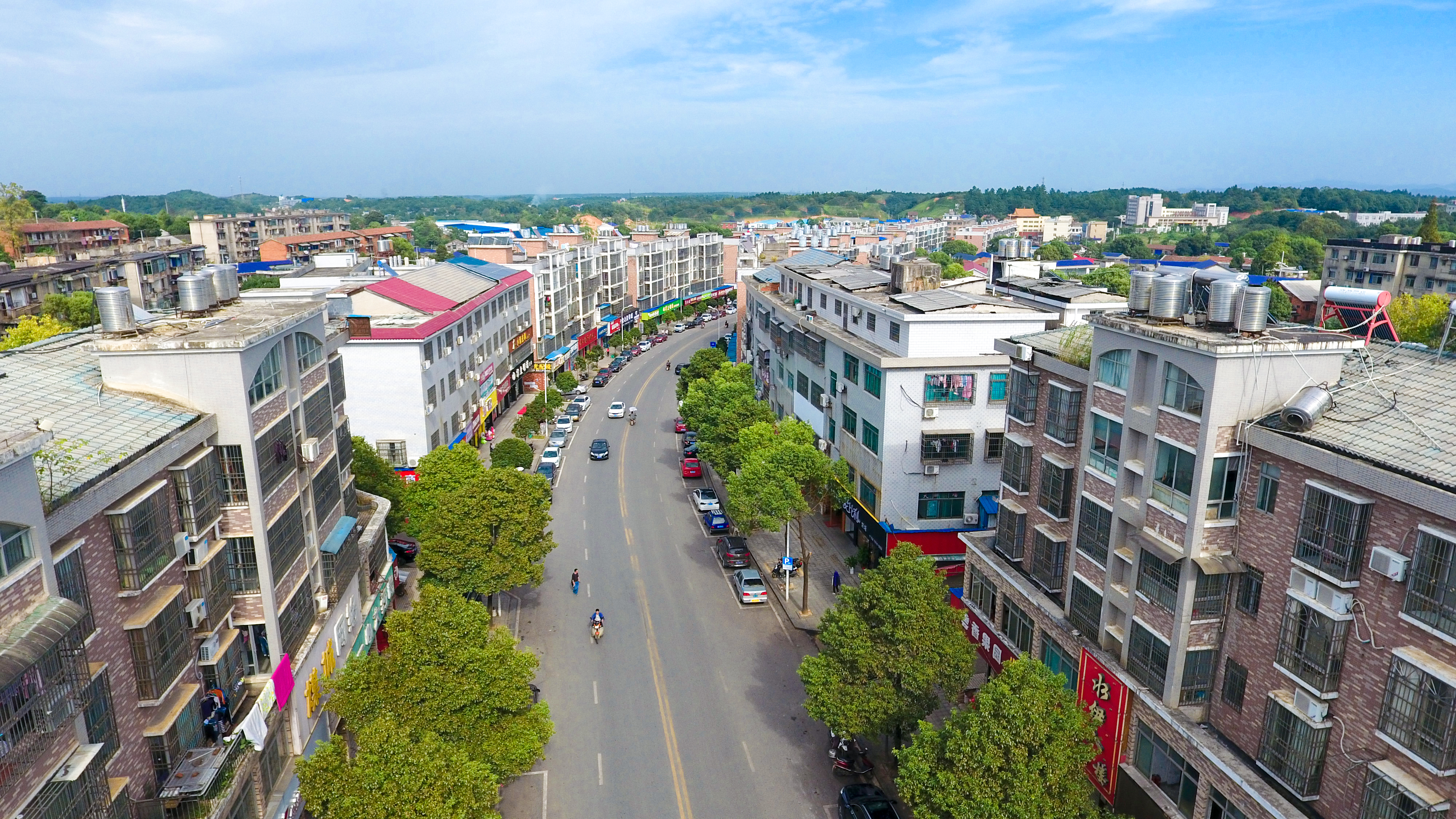 Ningxiang listed on China’s top 100 counties with comprehensive competitiveness
Ningxiang listed on China’s top 100 counties with comprehensive competitiveness  College welcomes a student of courage
College welcomes a student of courage  Changsha Blue Moon Valley Intelligent Home Appliances Industrial Town
Changsha Blue Moon Valley Intelligent Home Appliances Industrial Town 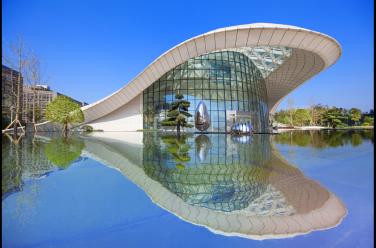 This is Ningxiang High-tech Zone
This is Ningxiang High-tech Zone 